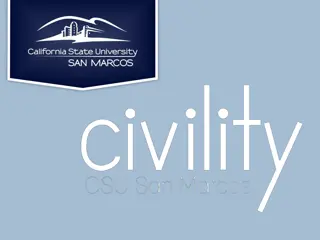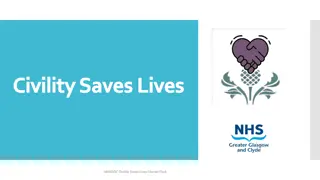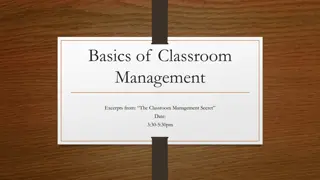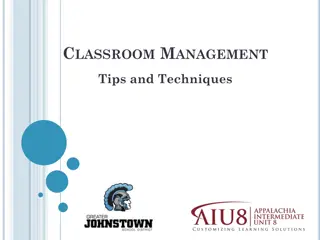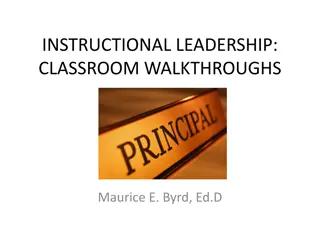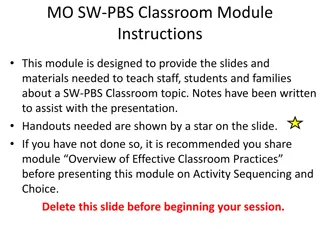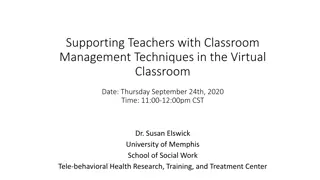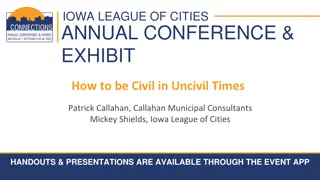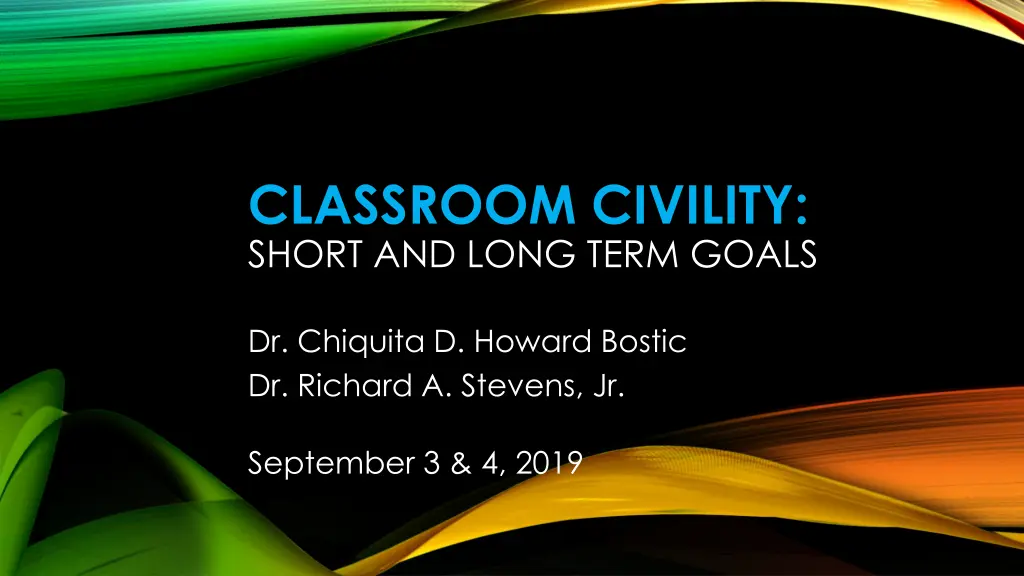
Cultivating Civility and Leadership in the Classroom
Explore strategies for fostering an unselfish classroom environment, navigating power structures, and developing leadership platforms in an educational setting. Learn to assess student needs, empower individuals, and promote a positive learning environment through reflection and proactive planning.
Download Presentation

Please find below an Image/Link to download the presentation.
The content on the website is provided AS IS for your information and personal use only. It may not be sold, licensed, or shared on other websites without obtaining consent from the author. If you encounter any issues during the download, it is possible that the publisher has removed the file from their server.
You are allowed to download the files provided on this website for personal or commercial use, subject to the condition that they are used lawfully. All files are the property of their respective owners.
The content on the website is provided AS IS for your information and personal use only. It may not be sold, licensed, or shared on other websites without obtaining consent from the author.
E N D
Presentation Transcript
CLASSROOM CIVILITY: SHORT AND LONG TERM GOALS Dr. Chiquita D. Howard Bostic Dr. Richard A. Stevens, Jr. September 3 & 4, 2019
OVERVIEW Brief Reminder of Previous Presentation Examining the Impact of Proactive Goals Exploring Short and Long-term Reactive Measures Assessment of Tools and Management Experiences
UNSELFISH CLASSROOM ENVIRONMENT EXPLORE information and positions that present diverse perspectives. CONSIDER differences in learning styles and knowledge levels. Use OPEN COMMUNICATION AND ACTIVE LISTENING to assess student needs and generate outcomes. Beyond GroupThink Theory (Mitchell & Eckstein, 2009, p.164)
POWER STRUCTURES Navigate through power structures (IDENTIFY CHAMPIONS AND BE PATIENT). Identify resources to help students persevere (COMMITTEES, MENTORING, AND BEYOND SELF). Think outside the box on how to empower students (8 TOOLS).
LEADERSHIP PLATFORMS Know your own gifts, talents, and abilities (GOALS, OBJECTIVE AND ROLE POSITION). Speak love and joy to create positive and healthy environment. Words help create a sense of belonging: FEELING RESPECTED, VALUED, ACCEPTED, CARED FOR, AND INCLUDED (Strayhorn, 2012). Believe you can change a life through your work!
SELF CHECK-IN Check-in Reflection: Give yourself permission to CHANGE, GROW, AND EVOLVE. Accountability: Have the HUMILITY AND CURIOSITY to ask questions and hear real answers. 30-DAY IMPROVEMENT PLAN Start, Stop, Continue, Change (2S2C) HOT SHOT RULE: Learn from the best.
FOLLOW-UP: SHORT TERM CHECK-IN with student(s) Assess RESOURCES for students and other stakeholders Classroom follow up REFLECTION: Comfort with Chaos; knowledge how conflict impacts students personal and academic success; ability to handle intense emotions (yours and students) SELF CARE
FOLLOW-UP: LONG-TERM CHECK-IN with student(s). SELF CARE Reflect on content and issues that SPARKED the ISSUE. REFLECTIVE TEACHING: What do I want my participants to know? How do I want them to feel? What do I hope they will do? (Fairchild, 2015) Assessment of PROACTIVE PLANNING and REACTIVE RESPONSES and FOLLOW UP: Immediate, Short-term, and Long-term. Make changes to the process.





